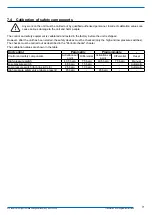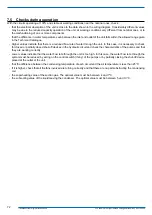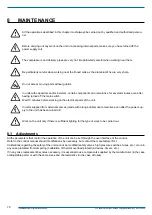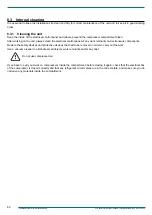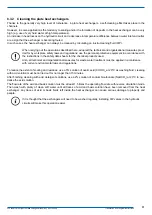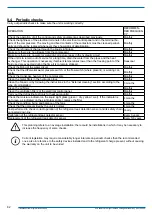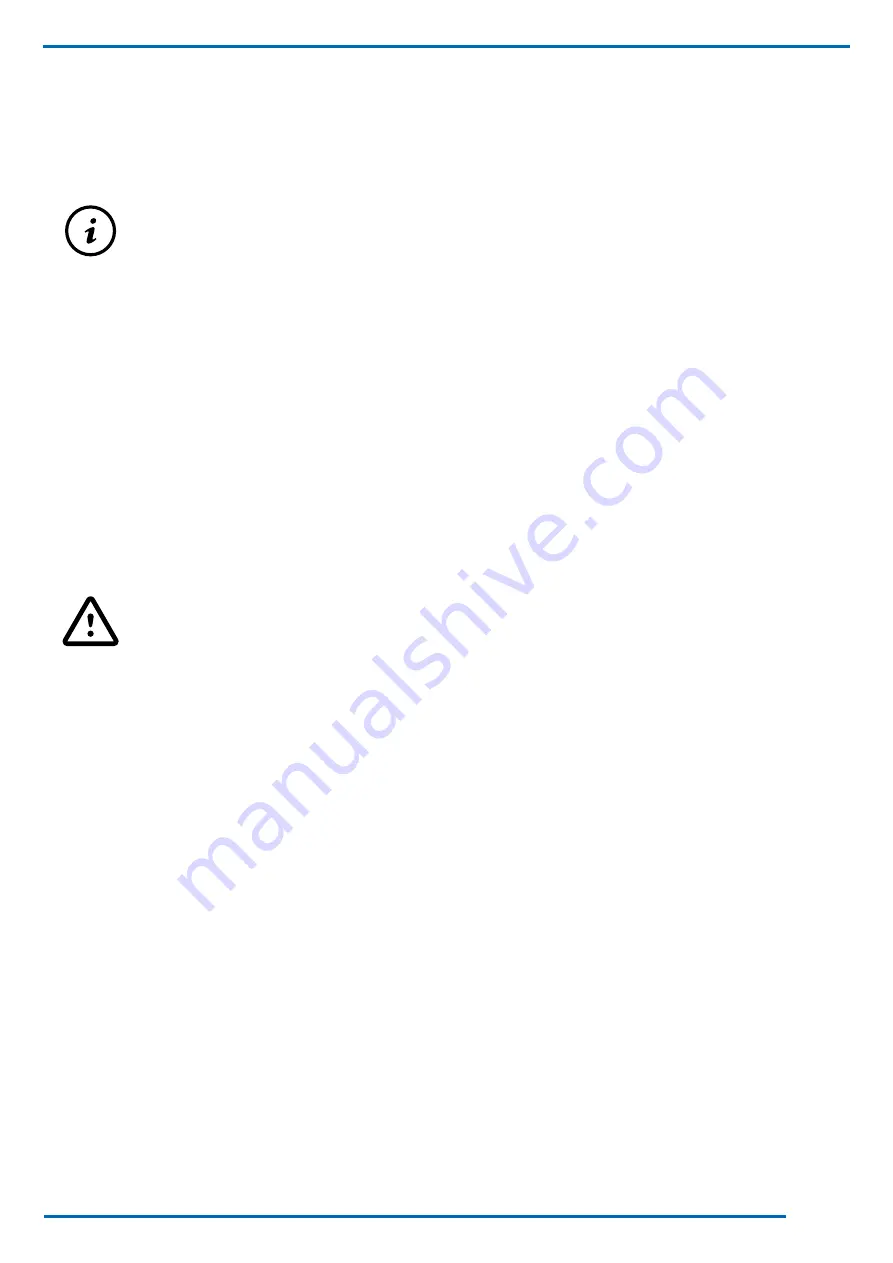
79
We reserve the right to make changes without any prior notice.
Translation from original instructions
8.2.3 Cleaning e-coated microchannel coils
Microchannel coils must be cleaned regularly (see Periodic checks section)
Routine and documented cleaning is a necessary condition for maintaining the warranty on the coils and on the e-coated
treatment.
In addition to the required periodic cleaning, if the unit is used seasonally, we strongly recommend cleaning
the microchannel coils at the end of seasonal use, so that no residues remain on the coils, and then again
before starting the unit.
The coils can be cleaned with a high-pressure jet of water by strictly following the instructions below:
- before using the jet of water, remove extraneous objects from the coil and any debris attached to its surface or stuck
between the frame and the supports. We advise using a vacuum cleaner;
- clean the surface using a high pressure water cleaner, and evenly and steadily spray the coil from the bottom upwards,
keeping the jet at an angle never more than 45° to the surface;
-
never exceed a jet pressure of 50 bar, and always use a diffuser nozzle that is large enough (25/30°);
-
keep the diffuser nozzle at least 300 mm away from the surface of the coil. It is essential to control the pressure and
be careful not to damage the fins;
-
use only mains water to clean the coils (if you have any doubts about the quality of the water to be used, compare it with
the table shown in the "Water composition" chapter of the "Hydraulic connection" section).
- it is very important for the temperature of the water used for rinsing to be lower than 55°C and for the water pressure
to be lower than 50 barg to avoid damaging the fins of the coil. A high water temperature (in any case not above 55°C)
reduces surface tension and increases the ability to remove dirt and chlorides.
Check that no residues are left on the coil after finishing cleaning.
Excessive water pressure can bend the fins, with a consequent increase in aeraulic head losses on the
exchanger and lowering of the performance of the unit, or worse, it can cause the welds between the fins
and the microchannel tubes to break.
Concentrated and/or rotating jets of water are strictly prohibited.







